Diaphragm Walls vs. Sheet Piling: Choosing the Right Solution for Basement Construction in Jaipur
Building basements in a bustling city like Jaipur, with its mix of sandy soils, seasonal water tables, and rapid urban growth, is no small feat. Developers face the challenge of selecting a retaining wall system that balances cost, durability, and site-specific demands. Two popular methods—diaphragm walls and sheet piling—stand out as go-to solutions for deep excavation projects. Each has its strengths and trade-offs, shaped by Jaipur’s unique geological and urban landscape. This blog dives into a detailed comparison of these techniques, exploring their construction processes, suitability, and practical applications for basement projects in the Pink City.
What Are Diaphragm Walls?
Diaphragm walls are sturdy, in-situ concrete walls designed to hold back soil during deep excavations. The construction process starts with digging a narrow trench, often 0.8 to 1.5 meters wide, stabilized by bentonite slurry to prevent collapse. Workers then lower steel reinforcement cages into the trench and pour concrete, which displaces the slurry to form a solid, watertight wall. These walls are a favorite for high-rise projects in Jaipur, where deep basements are needed to accommodate parking or commercial spaces. Their ability to handle the city’s mixed soils—sandy in some areas, clayey in others—makes them a reliable choice. Diaphragm wall for deep basements in Jaipur ensures stability for ambitious projects.
What Is Sheet Piling?
Sheet piling, by contrast, involves driving interlocking sheets—typically steel, though vinyl or wood can be used—into the ground to create a barrier against soil and sometimes water. The sheets are installed using vibratory or impact hammers, a process that’s faster and often cheaper than diaphragm wall construction. In Jaipur, sheet piling is common for smaller projects or temporary retaining walls, such as those needed during roadwork or shallow basements. While effective, it’s less suited for the deep excavations required by modern skyscrapers or complexes in areas like Malviya Nagar or Tonk Road.
How They’re Built
Constructing a diaphragm wall is a meticulous process. It requires heavy machinery like hydraulic grabs or milling machines to excavate the trench, along with careful management of bentonite slurry to keep the trench stable. The reinforcement and concreting stages demand skilled labor to ensure the wall is seamless and strong. Sheet piling, however, is simpler. Workers drive prefabricated sheets into the ground, often completing the task in a fraction of the time. In Jaipur’s fast-moving construction scene, this speed can be a game-changer for projects with tight deadlines. Yet, for sites with high groundwater, diaphragm wall for deep basements in Jaipur offers unmatched reliability due to its watertight design.
Strength and Structural Support
When it comes to supporting heavy loads, diaphragm walls shine. Their reinforced concrete structure can bear both lateral earth pressures and vertical loads from buildings above, making them ideal for Jaipur’s growing number of high-rises. Whether it’s a commercial hub in C-Scheme or a residential tower in Vaishali Nagar, these walls provide the backbone for deep basements. Sheet piles, designed primarily for holding back soil, aren’t built to carry significant vertical loads. They work well for temporary setups or shallower excavations but fall short for permanent, load-bearing structures in complex urban projects.
Handling Water and Soil Challenges
Jaipur’s soil varies widely—sandy and loose in some areas, dense and clayey in others—with groundwater levels spiking during the monsoon. Diaphragm walls excel in these conditions, forming a continuous, impermeable barrier that keeps water out of basements. The bentonite slurry used during construction adds an extra layer of sealing. Sheet piles, while effective for soil retention, often need additional waterproofing to prevent leaks, especially in steel systems. For projects near seasonal streams or in low-lying areas like Jagatpura, diaphragm wall for deep basements in Jaipur is often the safer bet to prevent flooding risks.
Cost and Budget Considerations
Cost is a major factor in any construction project, and Jaipur’s developers are no strangers to balancing quality with budgets. Diaphragm walls are pricier, thanks to the specialized equipment, materials, and skilled labor required. The process is also slower, adding to labor costs. Sheet piling, with its prefabricated materials and straightforward installation, is typically more affordable, making it attractive for smaller or temporary projects. In Jaipur, where budget constraints often drive decisions, sheet piling might be chosen for low-rise developments, while diaphragm walls are reserved for high-stakes, permanent structures that justify the investment.
Noise, Vibration, and Community Impact
Urban construction in Jaipur, especially in crowded areas like the Walled City or Bani Park, must consider its impact on nearby residents and structures. Diaphragm wall construction is relatively quiet, using hydraulic equipment that minimizes noise and vibration. This makes it a better fit for sensitive zones. Sheet piling, however, relies on hammering sheets into the ground, which can create significant noise and vibrations, potentially disturbing neighbors or damaging older buildings. For environmentally conscious projects, diaphragm wall for deep basements in Jaipur reduces disruption, aligning with the city’s push for sustainable urban growth.
Durability and Long-Term Performance
When built correctly, diaphragm walls can last decades, often exceeding 50 years, thanks to their reinforced concrete makeup. They resist corrosion and wear, even in Jaipur’s occasionally saline or aggressive soils. Sheet piles, particularly steel ones, are more vulnerable to rust, especially in areas with high moisture or chemical content in the soil. While coatings can help, sheet piles are generally seen as less durable for permanent structures. For developers planning long-term investments, such as malls or office complexes, diaphragm walls offer peace of mind with their proven longevity.
Adapting to Jaipur’s Geology
Jaipur’s diverse soil conditions—from loose, sandy layers to rocky patches near the Aravalli foothills—demand flexible solutions. Diaphragm walls can be customized to suit almost any soil type, with deep embedment ensuring stability even in soft or uneven ground. Sheet piling works well in cohesive soils but can struggle in rocky terrains, where driving sheets becomes difficult. For deep excavations in challenging areas like the city’s outskirts, diaphragm wall for deep basements in Jaipur provides a versatile and robust solution that adapts to the region’s geological quirks.
Space and Aesthetic Benefits
Space is a premium in Jaipur’s urban core, where every square foot counts. Diaphragm walls double as permanent basement walls, eliminating the need for extra cladding or structural layers. They can also be finished to blend seamlessly into the building’s design. Sheet piles, while functional, are rarely aesthetic and often require additional work to integrate into the final structure. For high-density projects in areas like Raja Park or Mansarovar, diaphragm walls save space and enhance the building’s overall look, offering both practical and visual advantages.
Local Insights: Grimtech’s Experience
Jaipur-based firms like Grimtech have leveraged both techniques effectively. In a recent project, Grimtech used diaphragm walls for a multi-level basement in a commercial complex near Johri Bazaar, ensuring stability and waterproofing in a water-prone area. Conversely, they’ve employed sheet piling for quicker, budget-friendly retaining walls in smaller residential projects. These real-world applications highlight the strengths of each method. For large-scale developments requiring deep basements, diaphragm wall for deep basements in Jaipur remains the gold standard, offering unmatched reliability in the city’s dynamic construction landscape.
Making the Right Choice
Deciding between diaphragm walls and sheet piling in Jaipur hinges on project goals, site conditions, and budget. Diaphragm walls are the go-to for deep, permanent basements in high-rises or waterlogged sites, offering strength, watertightness, and durability. Sheet piling suits smaller, temporary, or budget-driven projects where speed is key. As Jaipur continues to grow vertically, diaphragm wall for deep basements in Jaipur stands out as the preferred choice for developers aiming to build safe, long-lasting structures that meet the city’s evolving needs.
FAQ:
1: Why are diaphragm walls preferred for deep basement construction in Jaipur?
Diaphragm walls are ideal for deep basements in Jaipur because they offer superior strength, waterproofing, and long-term durability. They handle varied soil types—like sandy layers in Jagatpura or clay in Vaishali Nagar—and resist groundwater seepage during monsoon seasons, making them a reliable choice for high-rise or commercial foundations.
2: How does diaphragm wall construction compare to sheet piling for basements?
While sheet piling is faster and cheaper, diaphragm walls provide better load-bearing capacity and water resistance—key for permanent basements in Jaipur. Sheet piles suit shallow or temporary works, but diaphragm walls are structurally stronger, making them the top choice for multi-level basements and urban infrastructure.
3: Are diaphragm walls more expensive than sheet piling for deep basements?
Yes, diaphragm walls generally cost more due to the need for specialized equipment, skilled labor, and complex execution. However, for deep basements in Jaipur where safety, stability, and waterproofing are non-negotiable, diaphragm walls deliver greater long-term value and reduced maintenance.
5: How do diaphragm walls handle Jaipur’s soil and groundwater conditions?
Diaphragm walls are built with bentonite slurry and watertight concrete, making them excellent at resisting soil pressure and groundwater ingress. This is critical in areas like Malviya Nagar or near the Aravalli foothills, where water levels fluctuate and mixed soil types pose engineering challenges.
5: Can diaphragm walls be used in space-constrained urban basement projects?
Absolutely. Diaphragm walls are perfect for Jaipur’s high-density zones like Raja Park or Mansarovar. Since they double as structural basement walls, they save space and reduce the need for extra layers, allowing developers to maximize usable area without compromising on safety or design.


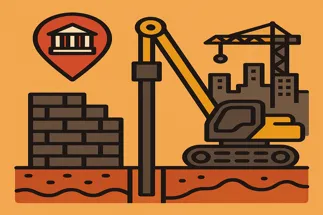

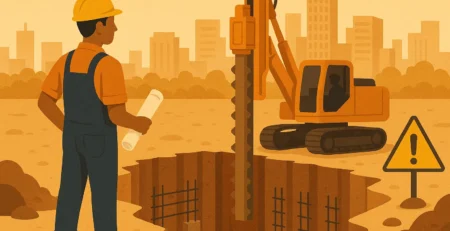
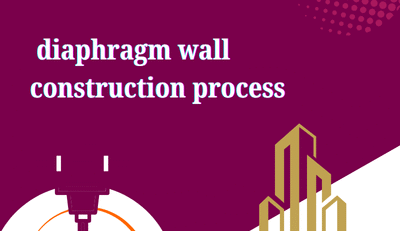
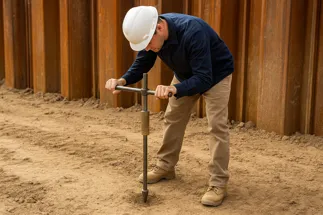
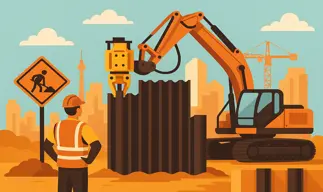
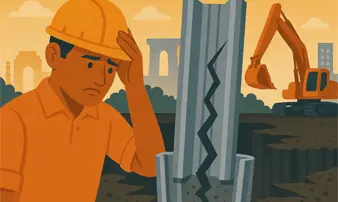
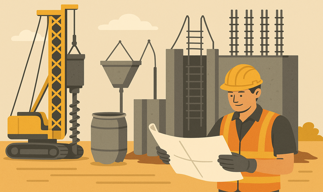
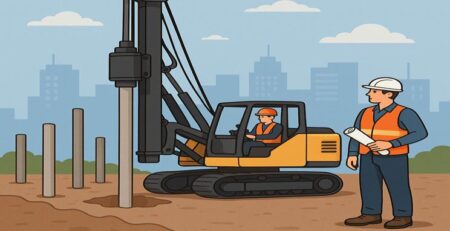

Leave a Reply